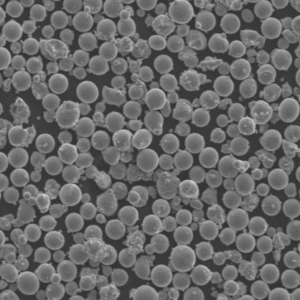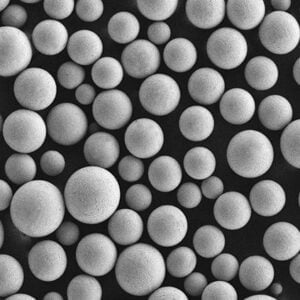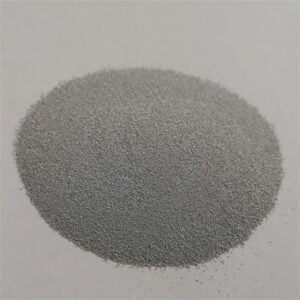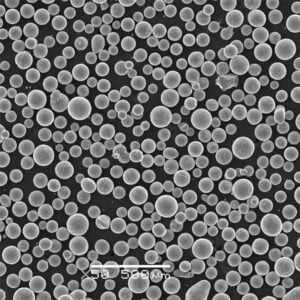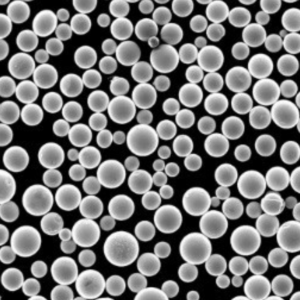ガスアトマイズ金属粉
目次
ガスアトマイズ金属粉 とは、金属射出成形(MIM)、積層造形、プレス・焼結、溶射、粉末冶金などの用途向けに、微細な球状金属粉末を製造するための材料加工法を指す。
ガスアトマイズでは、溶融金属合金は高圧不活性ガスジェットで液滴に分解されます。液滴は急速に凝固して粉末になり、粉末圧密プロセスに理想的な高度に球形の形態が得られます。
このガイドでは、ガスアトマイズ金属粉末の組成、特性、用途、仕様、製造方法、サプライヤー、長所と短所、考慮すべきFAQについて説明します。
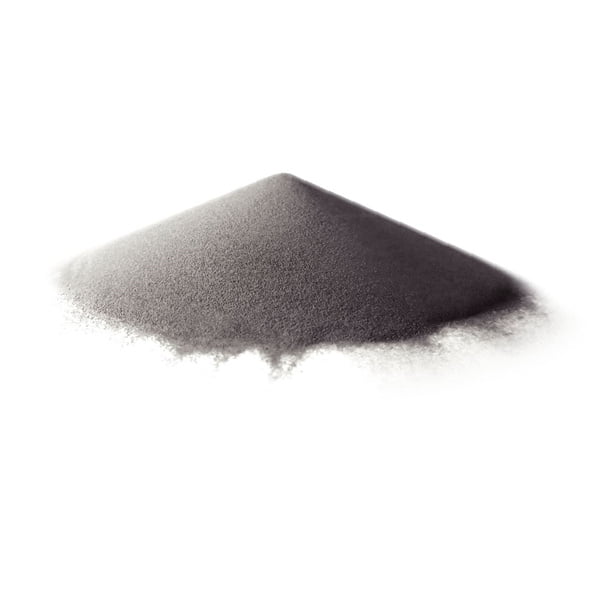
ガスアトマイズ金属粉末の組成
化学的性質を調整したさまざまな金属や合金をアトマイズして粉末にする:
| 素材 | 構成概要 | 一般合金 |
|---|---|---|
| ステンレス | Fe-Cr + Ni/Mn/Mo | 304, 316, 410, 420 |
| 工具鋼 | Fe-Cr-C+W/V/Mo合金 | H13, M2, P20 |
| アルミニウム合金 | Al + Cu/Mg/Mn/Si | 2024, 6061, 7075 |
| チタン合金 | Ti + Al/V 合金 | Ti-6Al-4V |
| ニッケル合金 | Ni + Cr/Fe/Mo 合金 | インコネル625、718 |
| 銅合金 | Cu + Sn/Zn/合金 | 真鍮、ブロンズ |
これらの金属粉末は、製造のニーズに合わせて特定の機械的、熱的、電気的、その他の物理的特性を提供する。
の特徴 ガスアトマイズ金属粉
化学的性質に加え、粒子径、形状、密度、微細構造などの特性も性能を左右する:
| 属性 | 説明 | 考察 |
|---|---|---|
| 粒度分布 | 直径の範囲/分布 | 最小フィーチャー分解能、パッキング効率に影響 |
| 粒子形態 | 粉末形状/表面構造 | 丸みを帯びた滑らかな粒子が、最高のフローとハンドリングを実現 |
| 見かけ密度 | 粒子間ボイドを含む体積あたりの重量 | コンパクト性とクラスタリングに影響 |
| タップ密度 | メカニカル・タッピング後の沈降密度 | パウダーベッドの圧縮のしやすさ |
| 表面化学 | 表面酸化物、残留ガス、水分 | 粉体の安定性と一貫性に影響 |
| 微細構造 | 粒度/相分布 | 圧密後の硬度、延性などの特性を測定する。 |
これらの相互に関連する側面は、ニーズに対してバランスが取れている。
ガスアトマイズ金属粉末の用途
一貫した材料投入とネットシェイプ機能により、多様なアプリケーションをサポートする:
| 産業 | 用途 | コンポーネント例 |
|---|---|---|
| 積層造形 | 3Dプリンティング原料 | 航空宇宙用エアフォイル、医療用インプラント |
| 金属射出成形 | 小さな複雑な金属部品 | ノズル、ギア、ファスナー |
| プレスと焼結 | P/M部品製造 | 自動車構造部品、軍事/銃器部品 |
| 溶射 | 表面コーティング | 耐摩耗性、耐腐食性オーバーレイ |
| 粉末冶金 | オイルライトベアリング、自己潤滑性ブッシュ | 多孔質構造を持つ摩耗部品 |
ガスアトマイゼーションは、最終的な性能のニーズに適した微細構造と化学物質を調整するためのユニークなアクセスを提供します。
仕様
用途によって異なるが、一般的な公称範囲は以下の通り:
| パラメータ | 典型的な範囲 | 試験方法 |
|---|---|---|
| 粒度分布 | 10 - 250 μm | レーザー回折、ふるい |
| 粒子形状 | >85%球面 | 顕微鏡検査 |
| 見かけ密度 | 2 - 5 g/cm3 | ホール流量計 |
| タップ密度 | 3 - 8 g/cm3 | タッピングボリューメーター |
| 残留ガス | < 1000 ppm未満 | 不活性ガス分析 |
| 表面酸化物の含有量 | < 1000 ppm未満 | 不活性ガス分析 |
よりタイトな分配曲線は、後工程での信頼性の高い性能を保証します。
ガス噴霧製造の概要
- 誘導炉に金属インゴット、廃棄スクラップなどの原料を装入する。
- 溶融材料、試料の化学的性質と温度
- 溶融金属ストリームを密着型ガスアトマイザーノズルに押し込む。
- 滑らかな液体金属流の形状
- 高速不活性ガスジェット(N2, Ar)が流れを液滴に分解する。
- 金属液滴は急速に凝固して粉末になる ~100-800 μm
- サイクロンセパレーターによる粗いフラクションの熱分級
- 微粉末を回収システムとビンに集める
- 必要に応じてふるい分けを行う。
- 不活性な埋め戻し材で材料を梱包/保管する。
このプロセスのすべての側面を正確にコントロールすることが、一貫性を保つ鍵である。
ガスアトマイズ金属粉 サプライヤー
世界をリードする多くの素材メーカーが、ガスアトマイゼーション製造を行っている:
| サプライヤー | 材料 | 説明 |
|---|---|---|
| サンドビック | 工具鋼、ステンレス鋼、超合金 | 幅広いガスアトマイズ合金 |
| カーペンター・テクノロジー | 工具鋼、ステンレス鋼、特殊合金 | カスタム合金も可能 |
| ヘガネス | 工具鋼、ステンレス鋼 | 霧化のグローバルリーダー |
| プラクセア | チタン合金、超合金 | 精密材料の信頼できるサプライヤー |
| オスプレイ・メタルズ | ステンレス鋼、超合金 | 反応性合金とエキゾチック合金に注力 |
ボリューム価格は、市場の状況、リードタイム、エキゾチックな材料費、その他の商業的要因に左右される。
ガスアトマイズ金属粉末を考慮する際のトレードオフ
長所だ:
- 一貫した球状形態
- 狭い粒度分布
- 既知の均一な投入化学物質
- 制御されたクリーンな材料微細構造
- AM蒸着に理想的な流動特性
- 薄い壁や複雑な形状が可能
短所だ:
- 多額の先行投資インフラが必要
- 限られた合金しか使用できない vs 水噴霧
- 汚染を防ぐための特別な取り扱い
- 生産量が多い場合、他の方法よりもコストが高い
- 代替プロセスより低い歩留まり
- 超微粒子のための限られた容量
重要な用途では、ガスアトマイズ粉末は一貫性と性能に関する独自の利点を提供します。
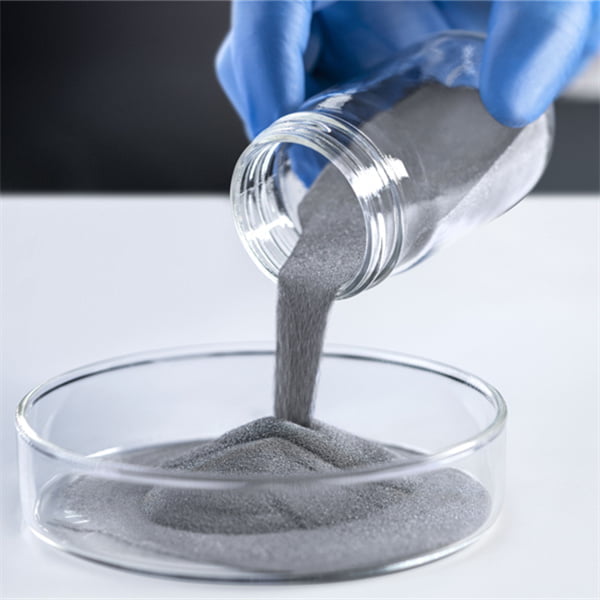
よくある質問
ガス噴霧と水噴霧の決定的な違いは何ですか?
ガスアトマイズは、溶融金属を粉末に分解するために、純粋に不活性ガスジェットに依存するのに対し、水アトマイズは、ガスジェットと相互作用する水噴霧を使用するため、冷却速度は速いが、より不規則な粉末が得られる。
達成可能な最も狭い粒度分布とは?
特殊なノズル、チューニング、分級機ステージにより、ガスアトマイズではD10:20μm、D50:30μm、D90:44μmまでの粒度分布が可能です。さらに厳しい範囲の開発が続けられている。
ガス噴霧ノズルはどこまで小さくできるのか?
ノズルの口径は0.5mmまで開発されており、1時間当たり1kg以下のバッチ生産が可能である。しかし、自由落下式の粉体分級は、20μm以下のサイズでは依然として困難である。
パウダーのバッチ間の一貫性に影響を与えるものは何ですか?
組成、清浄度、温度プロファイル、ガス圧、霧化条件、粉体の取り扱い/保管の管理はすべて、再現性に寄与する。厳密な工程管理は不可欠である。
初期質量に対する典型的な粉末収率はどのくらいですか?
一般的な合金とサイズの範囲では、歩留まり率は、望ましい分布幅と許容可能な分率によって、通常50~85%の範囲になります。分布が細かいほど歩留まりは低くなります。
シェアする
MET3DP Technology Co., LTDは、中国青島に本社を置く積層造形ソリューションのリーディングプロバイダーです。弊社は3Dプリンティング装置と工業用途の高性能金属粉末を専門としています。
関連記事
Met3DPについて
最新情報
製品

3Dプリンティングと積層造形用金属粉末







